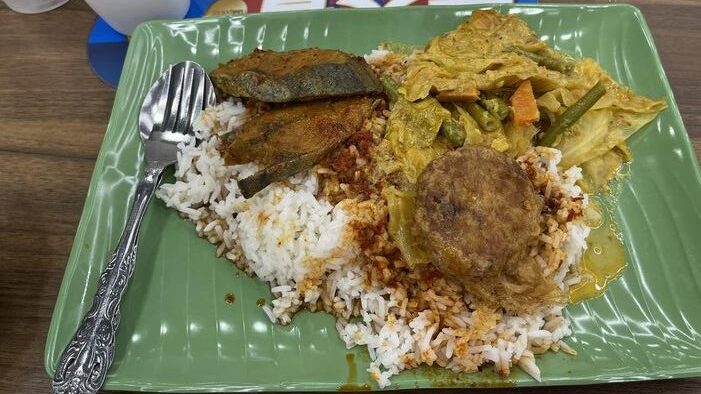SINGAPORE: A man took to social media asking if S$9.30 of Sayur Lemak, with two thin slices of fish, was “reasonable?” Showing the meal to social media users composed of “pergedel (potato fritter), assem pedas(sour and spicy) 2 thin slices of fish.”
While some said it was expensive, one commenter, Keith Lee, said that although it is pricier than normal, it should be worth the money if it tastes good. Others gave practical advice, stating that next time, practice asking for the price first.
QB Tan, however, said the price was indeed reasonable, breaking down the prices of each; he cited Begedil=$1, Sayur lemak= $1.50, rice=$0.80, fish=$6(2x$3), adding everything, he mentioned, “so correct all together $9.30. Standard price to pay.”
Atm Eliyas also pointed out the same thing. The price of a stall rental in a coffee shop is S$8,000 to S$10,000, gas per unit of S$20, where 40 units per week would amount to around S$800+ per week. He stated that provision prices and the water and electric bills went up and that “doing food business is a big challenge now.” Others pointed out that mackerel is not cheap and that having two pieces for the price was reasonable.
While complaints about rising food costs aren’t new, there’s been a surge in online discussions about higher food prices in the past few years. Inflation, which has driven up the prices of basic goods, including food, is a significant factor. This isn’t unique to Singapore; many countries worldwide are also grappling with high inflation rates.
The increase in food prices is a major concern for many Singaporeans accustomed to affordable, high-quality food. Notably, dining out at eateries like coffee shops and hawker centres in Singapore can be as cost-effective as cooking at home.
According to reports from the Monetary Authority of Singapore (MAS), the MAS Core Inflation rate decreased to 3.4% year-on-year in August 2023. This is notably lower than the highest point reached, 5.5% in January. Inflation has been slowing down for various items and services, such as non-cooked food, food services, travel-related expenses, and point-to-point transport services. The projection is that core inflation will continue to decrease, landing somewhere between 2.5% to 3.0% year-on-year by December.
It’s important to note that both potential positive and negative factors influence inflation. Shocks in global food and energy prices and changes in domestic labour costs could either push inflation up or down.
Even if the big picture says inflation is going down, if the food you love keeps getting pricier, it’s hard to see it as good news. Many things affect food prices, like what’s happening globally.

